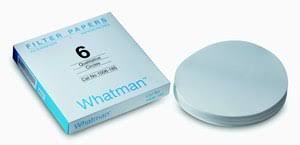Cellulose filters are used in qualitative analytical techniques to determine and identify materials.
Prepleated qualitative filters are available, which give improved flow rate and increased loading capacity compared to equivalent flat filters.
Cellulose filters are used in qualitative analytical techniques to determine and identify materials.
Prepleated qualitative filters are available, which give improved flow rate and increased loading capacity compared to equivalent flat filters.
| Variation Codes | 1006-090 |
|---|
Nuclepore track-etched polycarbonate membranes are manufactured from high-quality polycarbonate film and have sharply defined pore sizes, high flow rates, and excellent chemical and thermal resistance.
The membranes have a smooth flat surface and exhibit very low levels of extractables.
Grade 50: 2.7 μm*
Retention of very fine crystalline precipitates.
The thinnest of all Whatman filter papers with a slow flow rate, these filters have a hardened and highly glazed surface, which also keeps the paper free from loose surface fibers.
Highly suitable for
qualitative or quantitative filtrations requiring vacuum assistance on Büchner
or 3-piece filter funnels.
Very strong when wet and will withstand wet handling and
precipitate removal by scraping.
In the electronics industry, the virtual absence of
fiber shedding is utilized in carriers for integrated circuits.
This grade is also available in Smear Tab format for wipe testing (e.g. testing of
surfaces for radionuclide contamination).
Grade 3: 6 μm, (Medium flow, thick filter paper)
Double the thickness of Grade 1 with still finer particle retention and excellent loading capacity; more precipitate can be held without clogging.
The extra thickness gives increased wet strength and makes this grade highly suitable for use in Büchner funnels.
The high absorbency is particularly valuable when the paper is used as a sample carrier.
Grade 40: 8 μm*
The classic general purpose ashless filter paper with medium speed and retention.
Typical applications include gravimetric analysis for numerous components in cements,clays, iron, and steel products; as a primary filter for separating solid matter from aqueous extracts in general soil analysis; quantitative determination of sediments in milk, and as a pure analytical grade clean-up filter for solutions prior to AA
spectrometry.
Also used as a high-purity filter in the collection of trace elements and radionuclides from the atmosphere.
Select at least 2 products
to compare

There are no reviews yet.